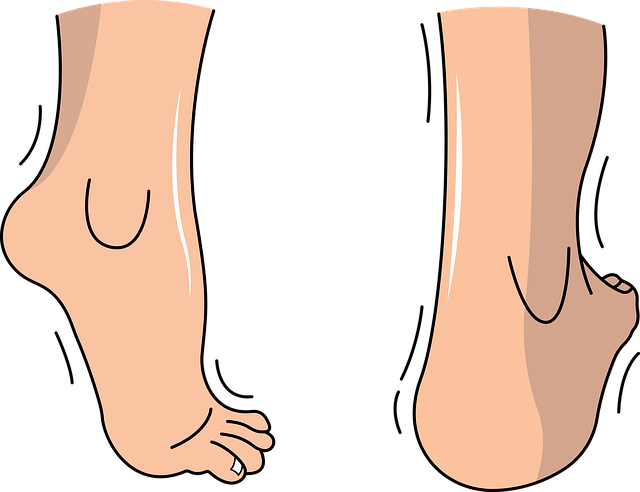Internal Injury Attorney: Expertise in Blunt Force Trauma Compensation

An internal injury attorney is crucial for navigating complex legal and medical aspects of blunt for…….
In the intricate web of legal services, the role of an internal injury attorney stands out as a beacon of hope for individuals facing internal injuries, often resulting from medical negligence or workplace accidents. This comprehensive article aims to dissect and demystify the multifaceted world of internal injury law, offering readers a profound understanding of this specialized field. We will explore its historical roots, global reach, economic implications, technological integrations, regulatory frameworks, and the challenges it faces. Moreover, through real-world case studies, we shall illustrate the transformative power of adept legal representation in securing justice for victims. By delving into these aspects, our goal is to highlight the significance of internal injury attorneys in ensuring accountability and providing compensation for those whose lives have been affected by internal injuries.
An internal injury attorney, also known as a personal injury lawyer specializing in internal injuries, is a legal professional who practices within the realm of tort law, focusing on cases involving non-external physical harm. Internal injuries, as the term suggests, refer to injuries that occur within the body, often stemming from medical malpractice, hospital errors, or accidents at workplaces or public spaces. These injuries can range from complications during surgeries to misdiagnoses leading to severe health conditions.
Historically, personal injury law has primarily dealt with external trauma, such as car accidents and slips and falls. However, with advancements in medicine and a growing awareness of medical negligence, the need for specialized legal representation for internal injuries became apparent. This niche area of law has evolved to address the unique challenges posed by complex medical issues, ensuring that victims receive fair compensation and accountability from those responsible.
The core components of an internal injury attorney’s practice include:
Medical Malpractice Cases: These attorneys advocate for patients who have suffered injuries due to errors in diagnosis, treatment, or hospital care. Examples include misprescribed medications, surgical errors, or failures in proper medical monitoring.
Workplace Injuries: Many internal injuries occur in the workplace due to unsafe conditions, improper training, or exposure to hazardous materials. Lawyers specializing in this area ensure that employees receive benefits and compensation for their pain and suffering.
Pharmaceutical Litigation: Cases involving defective drugs or medical devices often result in severe internal injuries. These attorneys hold pharmaceutical companies accountable for marketing dangerous products.
Hospital Negligence: They represent patients who have endured harm due to hospital negligence, such as infection control failures, nursing errors, or inadequate facility maintenance.
The impact of internal injury law is not limited by geographical boundaries, as the need for specialized legal assistance in this realm is a universal concern. While the specific regulations and legal frameworks vary across countries, the fundamental principles remain consistent: ensuring justice for victims and holding liable parties accountable.
North America: The United States and Canada have robust personal injury laws with well-established precedents for medical malpractice and workplace injuries. Many states in the US have specialized internal injury divisions within their legal systems.
Europe: European countries, including the UK and Germany, have robust patient rights legislation. However, the approach to compensation varies, with some countries adopting a no-fault system, while others follow a more traditional tort law model.
Asia: Countries like Japan and South Korea have seen a rise in internal injury cases due to their growing economies and increasing exposure to Western medical practices. The legal systems in these regions are adapting to meet the demands of modern society.
Medical Tourism: An emerging trend, especially in developing countries, is medical tourism, where individuals travel for medical treatments, potentially increasing the risk of internal injuries in unfamiliar healthcare settings.
Digital Health Records: The adoption of electronic health records offers both advantages and challenges. While it improves accessibility, it also raises concerns about data privacy and security, which can impact legal cases involving internal injuries.
Aging Population: Many developed nations are experiencing an aging population, leading to a rise in internal injury cases related to age-related health issues and medical negligence.
The economic aspects of internal injury law are multifaceted, impacting both the legal profession and the broader economy.
Legal Services Demand: Internal injury cases often involve complex medical issues, driving up demand for specialized lawyers. This demand can lead to higher attorney fees, especially in regions with limited legal resources.
Insurance Industry: Insurance companies play a significant role in internal injury cases, providing liability coverage for healthcare providers and employers. They assess risks, negotiate settlements, and defend against claims, influencing the financial outcomes of these cases.
Legal Fundings: Some plaintiffs’ law firms specialize in internal injury cases and attract substantial investments from venture capital firms seeking high-impact returns. These investments can fuel legal innovation but also create expectations of significant financial outcomes.
Settlements and Awards: The economic impact of internal injury cases extends beyond legal fees. Large settlements and jury awards can have a ripple effect on the parties involved, affecting their financial stability and insurance premiums.
The role of internal injury attorneys is integral to maintaining the balance in economic systems, ensuring that individuals affected by negligence or accidents receive fair compensation. This aspect is crucial for fostering trust in healthcare and workplace safety standards, as it encourages institutions to maintain high levels of care and adherence to regulations.
Technology has been a game-changer in the legal field, including internal injury law. The following advancements have significantly influenced how these attorneys conduct their practice:
Electronic Discovery: Digital documentation and electronic discovery tools streamline the process of reviewing medical records, treatment reports, and other evidence, making case preparation more efficient.
Medical Expert Testimony: Video conferencing and online platforms enable expert witnesses to provide testimony remotely, eliminating geographical barriers and reducing costs associated with travel.
Legal Research Databases: Comprehensive legal research databases provide access to relevant case law, regulations, and medical literature, empowering attorneys to build stronger cases.
AI and Predictive Analytics: Artificial intelligence applications assist in analyzing large volumes of data, identifying patterns, and predicting potential outcomes, aiding in case strategy development.
The legal landscape for internal injury attorneys is shaped by policies and regulations that vary across jurisdictions. These frameworks ensure accountability and provide a structured approach to resolving disputes.
Informed Consent: Many countries have laws requiring healthcare providers to obtain informed consent from patients before providing treatment, which can be crucial in medical malpractice cases.
Workplace Safety Standards: Occupational health and safety regulations mandate that employers provide a safe work environment, reducing the risk of internal injuries at the workplace.
Pharmaceutical Regulations: Stringent rules govern the testing, marketing, and sale of pharmaceuticals, holding manufacturers accountable for any harm caused by defective drugs.
Statutes of Limitations: These laws set time limits within which a plaintiff must file a lawsuit, ensuring cases are resolved within a reasonable period.
Damages Caps: Some jurisdictions impose caps on the amount of damages that can be awarded in personal injury cases, including internal injury cases, to control litigation costs.
Mediation and Arbitration: Alternative dispute resolution methods, such as mediation and arbitration, offer faster and more cost-effective ways to resolve internal injury claims without going to trial.
The field of internal injury law is not without its challenges and criticisms, which often stem from the complexity of medical issues and the high stakes involved in these cases.
Medical Complexity: Understanding and presenting intricate medical information to judges, juries, or insurance companies can be challenging. Attorney-client communication must be clear and concise to ensure effective representation.
Documentation and Evidence: Internal injuries often require extensive medical documentation, which can be difficult to interpret and organize for legal purposes. Ensuring the accuracy and admissibility of evidence is crucial.
Statute of Limitations: Strict time limits on filing lawsuits can pose challenges when complex cases are involved, requiring attorneys to act swiftly and efficiently.
Cost and Accessibility: One of the primary criticisms is the high cost of legal services, which can be prohibitive for those with limited financial resources. Offering sliding scale fees or pro bono services can address this issue.
Lack of Public Awareness: Many individuals are unaware of their rights regarding internal injuries, leading to delayed or forgone legal action. Public education campaigns and community outreach programs can raise awareness.
Medical Industry Lobbying: Pharmaceutical companies and healthcare providers often lobby against stringent regulations, which can impact the legal landscape. Advocate for evidence-based policies and transparency in medical practices.
The Issue: A patient underwent a routine surgical procedure but suffered severe internal injuries due to the surgeon’s negligence, leading to prolonged hospitalization and multiple surgeries for repair.
Legal Strategy: The internal injury attorney built a strong case by engaging expert witnesses, including other surgeons, who provided testimony on the standard of care and the deviation from it. They also collected comprehensive medical records and obtained affidavits from nurses and other healthcare staff.
Outcome: The plaintiff was awarded substantial compensation for pain and suffering, medical expenses, and lost income, setting a precedent for similar cases in the region. This case highlighted the importance of meticulous documentation and expert testimony in medical malpractice litigation.
The Scenario: A group of factory workers developed respiratory issues due to prolonged exposure to toxic chemicals at their workplace, leading to a class-action lawsuit against the employer.
Legal Approach: The attorneys employed a multi-faceted strategy, conducting site visits, interviewing workers, and reviewing company safety protocols. They also enlisted the help of occupational health experts to assess the long-term effects of chemical exposure.
Result: The case resulted in a significant settlement, compensating the workers for their medical expenses, lost wages, and pain and suffering. This victory set industry standards for workplace safety and prompted the employer to implement stringent measures to protect employees.
Problem: A commonly used surgical device was found to have design defects, leading to severe internal injuries in numerous patients across multiple countries.
Legal Action: Global coordination among internal injury attorneys resulted in a class-action lawsuit against the manufacturer. The case relied heavily on international legal assistance and expert testimony from various specialists.
Success: The plaintiffs secured a substantial global settlement, providing compensation for current and future victims. This case demonstrated the power of international collaboration in holding multinational corporations accountable for their products’ safety.
The field of internal injury law is poised for growth and evolution, driven by technological advancements, changing demographics, and evolving legal landscapes.
Telemedicine and Remote Legal Services: The rise of telemedicine may open new avenues for legal services, especially in remote areas, but also raises questions about evidence collection and witness examination.
AI-Assisted Legal Research: Artificial intelligence will continue to revolutionize legal research, making it more efficient and accessible to attorneys and clients alike.
Specialized Courts and Tribunals: Some jurisdictions are establishing specialized internal injury tribunals to streamline case management and improve access to justice.
Aging Population and Elder Care: With the global aging population, cases involving internal injuries in elderly patients will likely increase, requiring attorneys to stay updated on geriatric healthcare issues.
Healthcare Technology and Cyber Liability: As healthcare systems adopt digital technologies, new forms of liability may arise, including cyberattacks on medical records and devices.
International Legal Collaboration: Cross-border cases involving internal injuries will continue to grow, necessitating international legal partnerships and a deeper understanding of diverse legal systems.
Internal injury attorneys play a pivotal role in ensuring that individuals whose lives have been disrupted by internal injuries receive fair compensation and justice. Through their specialized knowledge, they navigate complex medical, legal, and regulatory environments to hold liable parties accountable.
The global impact of this field underscores the universal need for access to quality legal services. As technology advances, policies evolve, and societies adapt to changing demographics, internal injury law will continue to develop, shaping the way we address and prevent these sensitive issues. By examining real-world cases and understanding the multifaceted nature of this practice, we can appreciate the dedication and expertise required to bring about positive change in the lives of those affected by internal injuries.
Q: What is the difference between internal injury law and general personal injury law?
A: Internal injury law focuses specifically on non-external physical harm, often resulting from medical malpractice, workplace accidents involving internal organs, or exposure to hazardous substances. General personal injury law covers a broader range of accidental injuries, including external trauma.
Q: How do I know if I have a valid case for an internal injury claim?
A: If you’ve suffered an internal injury due to someone else’s negligence or the negligence of an institution, you may have a case. Seek medical attention first, then consult with an experienced internal injury attorney who can assess your situation and advise you on your legal options.
Q: What is the process for filing a lawsuit for internal injuries?
A: The process varies by jurisdiction but generally involves the following steps: gathering medical records and evidence, consulting with an attorney, conducting investigations, negotiating with insurance companies or liable parties, and if necessary, filing a lawsuit in court.
Q: Can I afford to hire an internal injury attorney?
A: Many internal injury attorneys offer flexible fee structures, including contingency fees, where they only charge a percentage of the settlement or award. Pro bono services (free legal aid) are also available for those who cannot afford legal representation.
Q: How long does it take to resolve an internal injury case?
A: The duration varies significantly depending on the complexity of the case, jurisdiction, and whether it settles or goes to trial. Simple cases may resolve within a year, while complex cases could take several years.

An internal injury attorney is crucial for navigating complex legal and medical aspects of blunt for…….

Internal injuries, often invisible but potent, can severely impact health and daily life, stemming f…….

Fall-related internal injuries require specialized legal help from an internal injury attorney, who…….

Sports-related internal injuries require specialized legal care, which an internal injury attorney p…….

Internal injuries, often invisible but significant, cause physical and emotional trauma with potenti…….

Internal injuries, though invisible, can cause severe, lasting harm. An internal injury attorney is…….

Internal injuries, often subtle but significant, require specialized legal assistance. An internal i…….

Internal injury attorneys are crucial in navigating complex legal and medical aspects of truck accid…….

Contingency fee agreements allow victims of internal injuries to access legal representation without…….